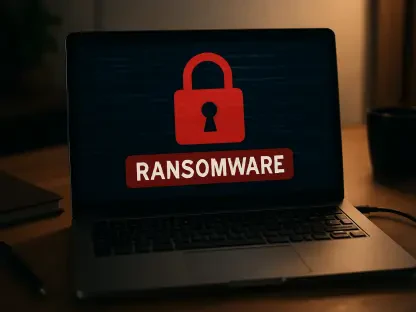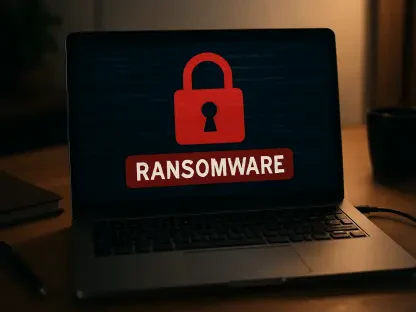In an era where data breaches are increasingly common, the incident at Golden Corral is a stark reminder of the risks. As we scrutinize this particular breach, it stands as a testament to the current state of cybersecurity and the hurdles businesses encounter in protecting personal information. The breach at Golden Corral has heightened public apprehension, raising flags about how well companies can defend against and manage the aftermath of such security lapses.In examining this event, we’re compelled to reflect on numerous aspects of data security. This includes the effectiveness of cybersecurity measures, the speed and transparency of response when breaches occur, and the ongoing efforts required to fortify defenses against evolving threats. It points to a need for a robust security framework and constant vigilance.Moreover, there’s the element of trust—a critical currency for businesses. When incidents like Golden Corral’s breach arise, they undermine consumer confidence, prompting calls for stricter data protection protocols. As enterprises try to navigate these challenges, this case illustrates the multifaceted and persistent nature of digital security concerns.The Golden Corral data breach serves as a potent example of the wider security dilemmas faced by modern organizations. Analyzing such incidents is vital for improving data protection strategies, ensuring that personal information is appropriately safeguarded in an increasingly digitalized world.
Understanding the Golden Corral Data Breach
Background and Impact of the Breach
Golden Corral, a prominent dining chain, experienced a significant digital infiltration in August, where a host of confidential information was jeopardized, including individuals’ Social Security numbers, banking information, and medical records. This cyber incident presented more than a threat to fiscal stability—it posed a severe risk to the identities of those implicated.The detection of the breach by Golden Corral was prompt, occurring mere days after the intrusion. Nonetheless, the aftermath of the breach unfolded over an extended period as the implications were unraveled—highlighting the intricate and often drawn-out nature of cyberattack responses. The interval from discovery through to comprehensive understanding and external communication underscores the multifaceted challenges that organizations face in the wake of cyber threats.This ordeal for Golden Corral illustrates not only the vulnerabilities that companies face in a digital age but also the dire consequences that ensue for individuals whose personal details are caught in the crosshairs. It is a sober reminder of the critical need for robust cybersecurity measures and rapid response strategies to protect sensitive data from malicious actors.
Golden Corral’s Response to the Breach
In the wake of the data breach, Golden Corral has taken a proactive stance combining immediate measures with guidance for those affected. Their open communication strategy demonstrated a pledge to honesty, as they worked hand-in-hand with federal officials to navigate the consequences of the breach. While there’s no proof that the leaked data has been employed maliciously, the company encourages vigilance among the customers whose information may have been exposed.Despite the acknowledgment of the breach, Golden Corral’s experience underscores a difficult truth that any organization—no matter how secure—can fall victim to cyber attacks. This event is a stark reminder that the threat landscape is evolving and that the protective measures in place yesterday might not suffice tomorrow. In response, Golden Corral is likely to bolster its cybersecurity strategies to guard against future incursions, signaling their understanding that in the digital age, continuous improvement in security protocols is a necessity. Their response serves as an exemplar for others in the industry, illustrating the importance of swift action and clear communication in the face of cyber incidents, along with the imperative to foster a culture of security that can adapt to emerging cyber threats.
The Triad Area Cybersecurity Crisis
Similar Breaches in the Triad Area
The data security incident at Golden Corral was part of a wider trend of cyber vulnerabilities in the Triad region, reflected by similar breaches at major corporations like Bank of America and VF Corp. The Triad area’s security challenges are industry-agnostic, hitting sectors from dining to apparel to banking.In these incidents, a wide array of sensitive information has been at risk, including Social Security details and intricate customer transaction records. Each data type carries its own set of risks, and in the wrong hands, the consequences can be dire. Identity theft, financial fraud, and a host of other illicit activities can arise from such breaches, underscoring the critical need for robust security measures across all companies.These security breaches aren’t mere inconveniences; they can have long-term repercussions for consumers and employees alike. Therefore, the consistent pattern of cyber incidents in the area signals a pressing call to action for businesses to reassess and bolster their cyber defenses. By doing so, they ensure the safeguarding of personal data is a top priority, thereby regaining public trust and upholding their responsibility for data protection in our increasingly digital world.
The Wider Impact of Localized Breaches
Cybersecurity breaches have the capacity to send ripples across the global business landscape. Even a localized incident can quickly spiral into an international issue, thanks to the deeply interwoven nature of modern commerce. A single point of failure may end up compromising sensitive data across borders, impacting a wide range of stakeholders.The ramifications of such security violations are far-reaching. They erode customer confidence and can tarnish the credibility of the affected organization irreversibly. As trust is a cornerstone of commercial relationships, rebuilding it can be an uphill battle. This erosion of trust can be particularly damaging, as it not only affects the direct business involved but also its partners and customers, potentially on a worldwide scale.Organizations of all sizes bear the brunt of these breaches through direct financial loss and the costs associated with rectifying the breach and enhancing security postures to prevent future incidents. There are also the more intangible costs such as the damage to the company’s market positioning and competitive edge.The collective toll these cybersecurity incidents take can be substantial, challenging not just individual businesses, but also the broader economic and socio-economic stability of regions. As companies scramble to strengthen their defenses, the specter of cyber threats serves as a constant reminder of the vigilance required in an era where data breaches can have such a prolific and damaging impact.
Industry-Wide Threats and Trends
An Alarming Rise in Cyberattacks
Cyberattacks are becoming more frequent and intense, with no sector left untouched. Companies like HanesBrands have suffered ransomware attacks that not only disrupt daily operations but could also leave a lasting negative impact on their reputation and financial stability. Similarly, the healthcare industry, a critical component of societal infrastructure, has witnessed significant breaches. For instance, healthcare providers Atrium Health and Novant Health Inc. have experienced unauthorized access incidents that put patient data at risk. Such breaches could severely damage patient trust and even violate privacy regulations.The trend reveals a harsh reality of modern cyber threats: they’re stealthy, prevalent, and growing more complex by the day. These cyber incidents serve to remind organizations across all industries of the critical need to invest in strong cybersecurity measures. From implementing robust cyber defenses to conducting regular security audits and delivering employee awareness training, organizations are urged to take comprehensive steps to protect their digital assets and maintain the privacy and trust of their clients, patients, and partners. In doing so, they fortify against the ongoing and evolving menace posed by cyber adversaries.
Ransomware and Data Theft Across Sectors
The surge in ransomware attacks poses a serious challenge, locking digital infrastructures until a payment is extorted, severely disrupting operations. These attacks often target businesses, holding their data hostage, causing financial losses, and undermining consumer confidence. In tandem, the risk from stolen personal information is alarming, with such data at risk of being traded on clandestine platforms or utilized in identity theft and scams. This digital underworld activity can have enduring repercussions for individuals, given that personal information is a valuable commodity in fraudulent circles.As these nefarious activities become deeply ingrained, a robust cybersecurity posture is no longer optional but a necessity. It’s critical for all sectors to integrate sophisticated and preemptive defenses to shield against these pervasive threats. This involves not just technological solutions like updated firewalls, encrypted data, and anti-malware tools, but also comprehensive training programs that increase awareness and reduce the likelihood of human error, which is often the weakest link in security chains.Moreover, proactive monitoring and threat detection systems can significantly minimize risks by identifying suspicious activities early, allowing for immediate containment and response to threats. Cybersecurity strategies must evolve continually to match the sophistication of cybercriminals and ensure resilience in the face of these potentially devastating cybercrimes.
The Importance of Robust Cybersecurity Measures
Lessons Learned from the Breaches
Recent data breaches, including the one at Golden Corral, have underlined the vulnerabilities that can persist in even the most secure cybersecurity systems. These incidents serve as crucial case studies, prompting businesses to recognize not only the need for defensive measures against cyberattacks but also the importance of readiness and response strategies for potential data breaches.Investing in strong cybersecurity measures is imperative to prevent sensitive data from being compromised and to safeguard against unauthorized access. This includes adopting superior technology, employing skilled cybersecurity professionals, and maintaining up-to-date defense protocols. Additionally, cultivating a security-centric organizational culture is essential. Employees should be educated on the significance of data security and be trained to identify and respond to security threats effectively.The lessons learned from these breaches emphasize the continuous nature of cybersecurity. It’s about evolving strategies to stay ahead of sophisticated cyber threats, undertaking regular security audits, and having contingency plans in place. Adaptation and vigilance are key in cybersecurity management, as threats evolve and new vulnerabilities emerge. Companies must, therefore, be proactive in their approach to cybersecurity, ensuring comprehensive protection for their data and systems.
The Need for Industry Collaboration
To effectively counteract evolving cyber threats, industry-wide collaboration is becoming increasingly important. Sharing insights and strategies can lead to stronger defensive measures and quicker responses to security incidents. Collective efforts, pooling resources, and exchanging expertise can augment individual companies’ capabilities to detect, respond to, and recover from cybersecurity events.In conclusion, the data breaches, exemplified by Golden Corral’s incident, characterize the significant cybersecurity challenges that today’s businesses face. The revelation of these vulnerabilities prompts a call to action for heightened vigilance and the implementation of stringent security protocols. Only through consistent efforts and collaboration can industries hope to protect against the sophisticated cyber threats of our time.









